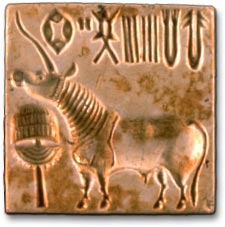 There has been a controversy among Dravidianists whether the two-way gender distinction as in Old Telugu (masculine/non-masculine) or the three-way distinction as in Tamil (masculine/feminine/neuter) represents the original situation in Dravidian. It is however now well settled that in this respect Old Telugu represents the Proto-Dravidian pattern and that the separate feminine gender was a later development (K.V. Zvelebil, Dravidian Linguistics: An Introduction, 1990: p.20). It may also be noted in passing that the resemblance between the suffix -am in Old Kannada and Tamil and the Sanskrit neuter suffix -am is purely a coincidence as proved by the different form of the re- constructed Dravidian suffix * -(a)mp(u).
There has been a controversy among Dravidianists whether the two-way gender distinction as in Old Telugu (masculine/non-masculine) or the three-way distinction as in Tamil (masculine/feminine/neuter) represents the original situation in Dravidian. It is however now well settled that in this respect Old Telugu represents the Proto-Dravidian pattern and that the separate feminine gender was a later development (K.V. Zvelebil, Dravidian Linguistics: An Introduction, 1990: p.20). It may also be noted in passing that the resemblance between the suffix -am in Old Kannada and Tamil and the Sanskrit neuter suffix -am is purely a coincidence as proved by the different form of the re- constructed Dravidian suffix * -(a)mp(u).
A few examples of the earliest inscriptional occurrences of the suffix -(a)mbu/- (a)bu in Old Telugu are listed below (cited by K.M. Sastri: ibid.):
| (1) | Nagabu : | Prob. name of a stone-mason. On a granite pillar in the Amaravati Stupa. Dated variously between 2nd cent. B.C.E. and 2nd cent. CE |
| (2) | samvatsarambul : | 'in the year'. In Cikulla Plates (ca. 6th cent. CE). |
| (3) | pandumbu : | 'ten measures'. In a stone inscription (ca. 7th cent. CE). |
It is somewhat surprising that none of the published lists of Old Telugu words culled from inscriptions include those found in the earliest stone inscriptions of the Pallavas from the Tamil country. I append below a list of the titles in Old Telugu (with the suffixes -(a)mpu/-(a)mbu) sported by Mahendravarman I (ca. 600-630 CE) in his stone inscriptions at Kanchipuram, Pallavaram and Tiruchirapalli (T.V. Mahalingam, Pallava Inscriptions,1988, Nos. 21, 28 & 34):
Kurrambu, Curmbu, Vamkambu (Kanchipuram).
Nivambu, Nilvuleneyyambu, Vampu, Vamkampu, Kathumpu, Pasarambu, Katunterambu, Nayambu, Cumbu (Pallavaram).
Nilvuleneyambu, Nivambu, Nayambu, Vambu, Katuntarambu, Karumbu, Kurrambu, Calambu, Kilambu (Tiruchirapalli).
